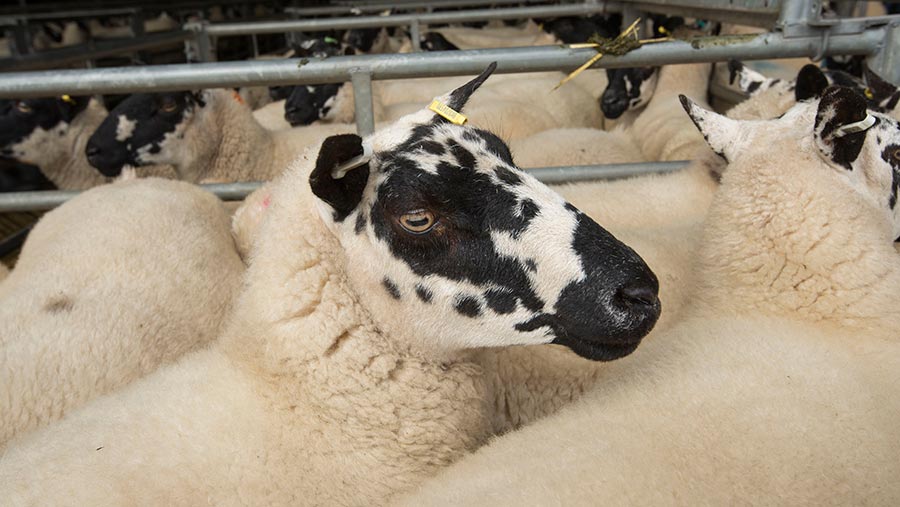Moxidectin advice renewed amid resistance concerns
 © FLPA/John Eveson/Shutterstock
© FLPA/John Eveson/Shutterstock Farmers have been issued a five-point plan for responsible moxidectin use to address resistance fears and keep the anthelmintic working longer.
This follows growing concern over reports of potential overuse on farms.
The dual-purpose use of moxidectin to control sheep scab and prevent or control worms has made the active popular with sheep farmers.
See also: Test and dip is best approach for national scab control
Vets say the main two areas of concern are use of the 2% injectable solution and treatment of ewes at lambing to manage the periparturient rise – the temporary loss of immunity to parasites in the weeks before and after lambing.
The new advice comes from a joint workshop in autumn 2019 between animal health giant Zoetis and Sustainable Control of Parasites in Sheep (Scops).
Speaking on behalf of Scops, independent sheep consultant Lesley Stubbings said: “Constructive discussions between Zoetis and Scops agreed that the priority must be to preserve moxidectin both as an anthelmintic for worms and a treatment for sheep scab.
“To do this, the sheep industry must prescribe moxidectin responsibly, by applying the Scops principles.
“In practice, this means sheep farmers working with whoever prescribes their anthelmintic, be it their vet or SQP, to avoid overuse and/or unnecessary use of moxidectin, ensuring the treatment is always given at the right dose rate and administered correctly, and allowing some worms to remain unexposed to the treatment.”
Why is this a problem?
Ms Stubbings said moxidectin resistance – and resistance to all macrocyclic lactones (ivermectin, doramectin and eprinomectin) – was known to be developing.
She added that moxidectin was often used on farms because of its 60-day persistence for sheep scab. Organophosphate (OP) plunge dipping has a 56-day persistence.
But she stressed that moxidectin should be used only if sheep scab has been diagnosed by a vet.
She also pointed out that moxidectin worked only against scab, whereas OP dipping worked against scab, ticks, keds, blowfly and lice.
5 steps to responsible moxidectin use
- Don’t use moxidectin in ewes around lambing year on year.
- Leave at least one in 10 ewes untreated if using moxidectin as a wormer. These need to be spread between different grazing mobs. It is not enough to simply leave singles, as they may be grazed in separate fields to twins. Use body condition as a guide and leave the fittest ewes untreated. If treating for scab, dose all sheep.
- Use moxidectin 2% only once in any flock in any one year. In practice, this means that if moxidectin 2% is used in ewes at lambing then it should not be used again in that flock in the same season.
- Do not use moxidectin 2% to treat sheep scab if it has been used to prevent the spring rise in worms and vice versa. An OP plunge dip is an appropriate alternative to treat scab.
- Check the dose rate and administration method. Underdosing remains a major risk factor in the development of anthelmintic resistance. Sheep farmers should know the weight of their sheep and dose to the heaviest (if a wide range of weights is expected, batch and dose accordingly). The correct technique for administration and maintenance/calibration of equipment is also vital.
Future work
Zoetis and Scops have agreed two further research areas:
- Looking into the risk posed by moxidectin passing to lambs via the ewe’s milk
- The possible role of moxidectin 2% in slowing the development of anthelmintic resistance to other molecules.
